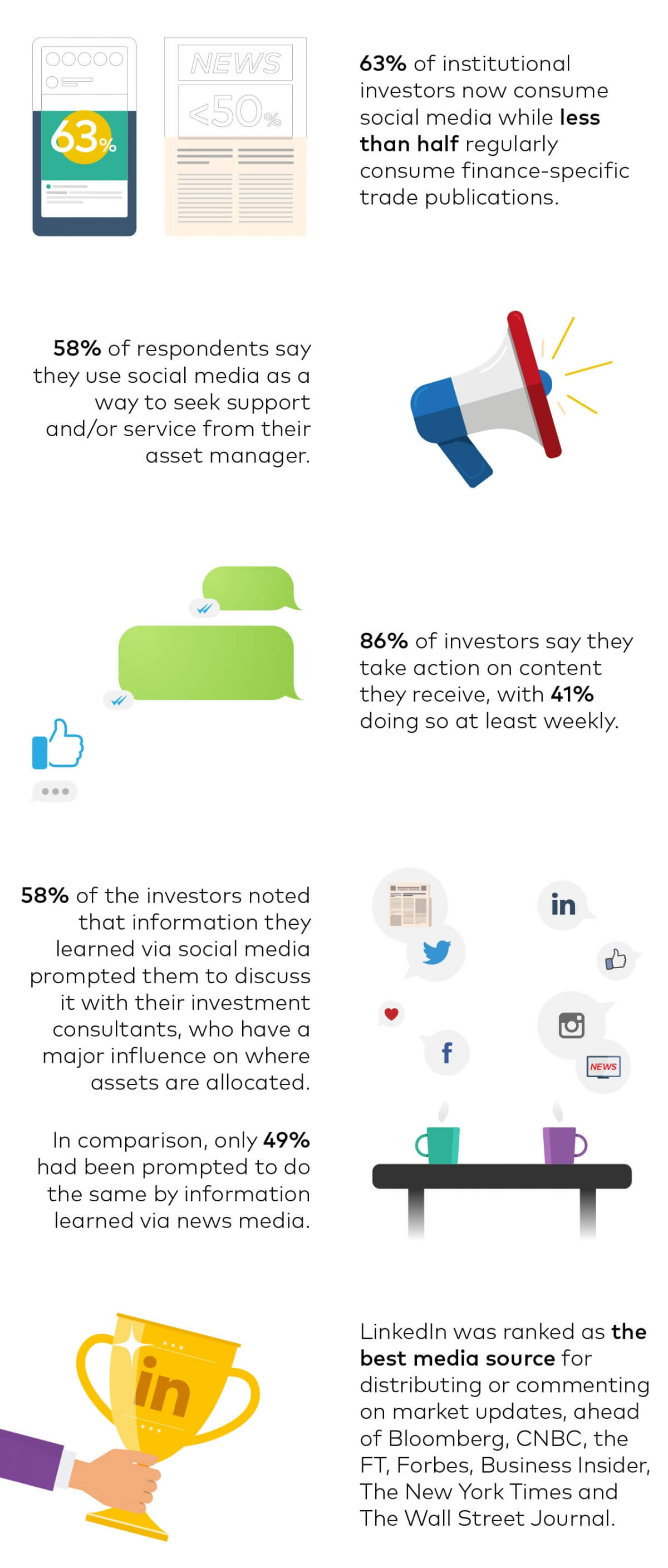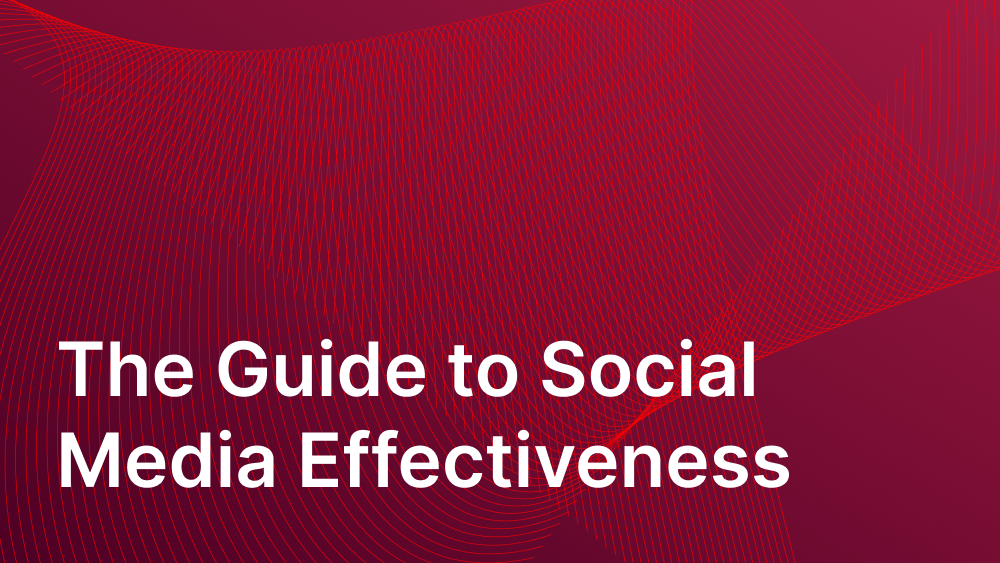It’s a major topic at every conference, event, dinner party and meeting you attend. Practically everyone you know uses it in some form, and the older generation yearns for a time before ‘Insta stories’, when they didn’t know quite so much about their grandchildren’s trips to Ibiza and nights out in London.
But, why should the financial services industry learn how to be effective on social media?
Well, it turns out there’s some pretty convincing evidence to support its utility. According to a 2018 study by Greenwich Associates on ‘The Role of Digital & Social Media in the Investing Process’:

“Sifting through high volumes of content to access the most impactful and/or relevant information is both challenging and time consuming. Therefore, platforms that help filter and personalize content are therefore highly valued.” Greenwich Associates.
So, how can you tell if your firm is effective on social media?
We measure social media effectiveness using three key markers:
Consistency
Are you posting every day, every week or once every few months?Content
Is your content educational – do you have thought leadership that drives traffic to your site?
Do you utilise all available content formats (GIFs, videos, branded banners etc.)?
Is your audience engaging with what you put out?
Presence
Do you have a presence on multiple platforms?
Are your social media channels making it onto your Google Page One?
What is the size of your online following?
Once you have completed an assessment of your current effectiveness, you can start to improve your score across all three areas.
1. Developing your consistency

It’s easy enough to say you just need to post every day, however in order to do this, you will need to produce and organize a great deal of unique content.
Below are some tips for making this happen:
- Put together a monthly content calendar.
- Use software tools which enable you to schedule posts (Hubspot, Hootsuite, Sprout).
- Ensure there is a designated compliance professional to guarantee posts are approved on time.
- Diarise key calendar events so you can plan campaigns in advance (IWD, Father’s Day, etc.).
- Keep an eye out for company news/events.
- Review your analytics to establish what the most optimal times to post your content are.
- Look for relevant content (i.e. positive mentions) that you can repost.
2. Improving your content

‘Content is king’ when it comes to social media. This is where most of your focus and time should be spent.
Tips for improving your content:
- Create specially designed visuals in the company style (example).
- Create campaigns around key events (example).
- Celebrate holidays (example).
- Design visuals to fit image specifications.
- Showcase your company’s culture (example).
- Create content around company events (example).
- Create content around key milestones (example).
- Include clear CTAs in posts – boost engagement (example).
- Analyse post engagement to inform future strategy.
- Use branded cards to highlight quotes/statistics (example).
- Use short videos/GIFs to draw out key pieces of content (example).
- Run engagement campaigns.
- Produce thought leadership/educational content that links back to your site (example).
3. Growing your presence

When it comes to presence, not only do you have to be on the same platforms as your audience, but in order to appear credible you have to build a significant following.
To do this:
- Setup accounts on all relevant platforms (find where your competitors and audience are interacting).
- Promote your social media accounts at events.
- Run digital advertising campaigns.
- Include social media icons/handles on your site and in all your print/email marketing materials.
- Cross-promotion (i.e. posting a Vimeo/YouTube video on your Twitter/LinkedIn).
- Engage in organic community building.
- Network in the real world, connect with people online afterwards.
- Master the first two steps and your presence will follow.
Taking into account all of the above, it is important to remember that social media has its limits. Social media is not the right place for lengthy expositions, or complex financial matters that require a great deal of reflection and thought on the part of the audience. It is however an opportunity for brands to communicate directly with their audience, control their Google Page One with ‘owned’ content, capture feedback and control their message.
And there you have it. All you need to know forever. Only joking. Social media is a continuously evolving and changing landscape. This is because it’s the medium through which our society and culture are reflected. That’s what makes it so important… and so hard to keep abreast of. Follow us, to stay ahead of the game!
Below is a social media best practice case study from our ‘Best Practice’ report for asset managers:



